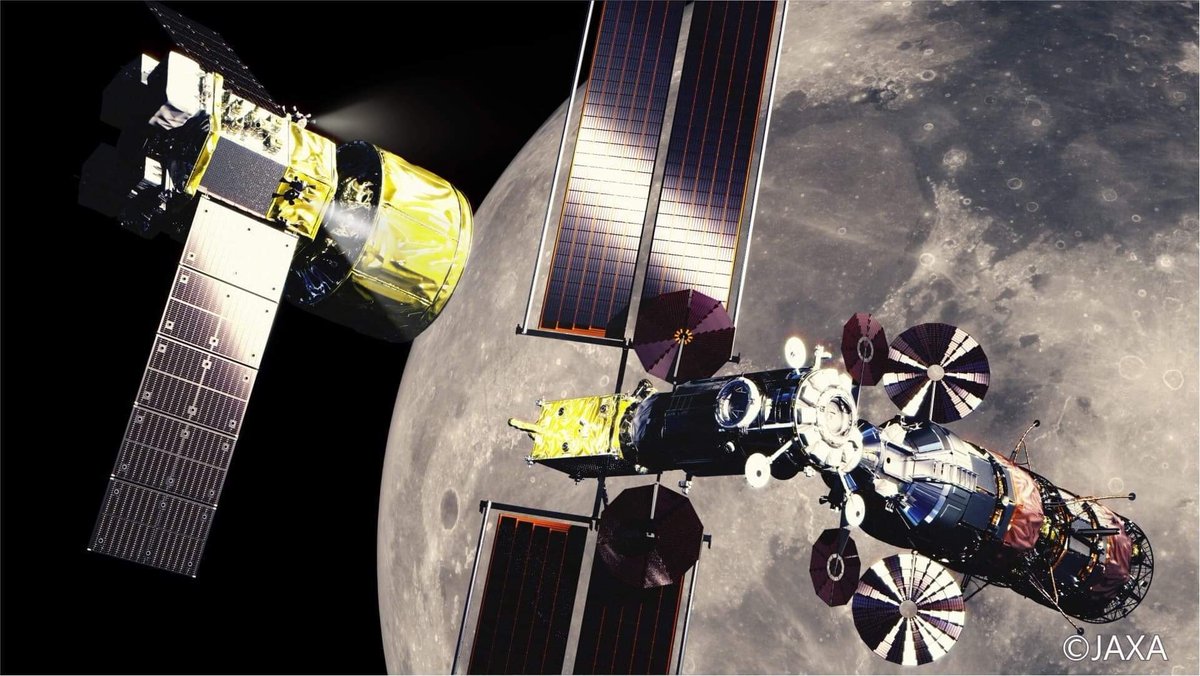Japan Sets Sights on Moon with NASA and India

WASHINGTON — Japan has its eyes on the moon, with two new partnerships designed to advance the country's lunar goals.
The nation signed on as a partner to NASA's Artemis program, although the details of that partnership have not yet been specified. A representative of the Japan Aerospace Exploration Agency (JAXA) also spoke yesterday (Oct. 22) at the International Astronautical Congress held here about a potential partnership with India's space agency on another lunar mission.
"It's not easy to succeed in our mission," Ryo Hirasawa of JAXA said during a presentation. "We decided to go together with ISRO," he added, referring to the agency's Indian counterpart. The two space agencies are embarking on a Phase A study of such a mission's feasibility.
Related: Tiny Satellites Launch From Space Station (Photos)
But right now, the pair would aim for a launch around 2023. Japan would provide the rocket and rover, Hirasawa said, while India would provide the lander. The mission would last for about six months and target a constantly sunlit region near the moon's south pole. There, the mission would investigate water, preparing for later missions in which JAXA would like to use ice as rocket fuel.
In particular, the rover would be equipped with a drill that could reach about 5 feet (1.5 meters) into the lunar rock. After drilling, the rover would heat up that material, and by measuring changes in the sample's mass, identify volatiles found in the rock.
Hirasawa also touched on a cubesat lander dubbed OMOTENASHI, which JAXA hopes to launch with NASA's first Artemis mission, according to a full paper submitted to the congress. The cubesat, which would fly in 2020, would be Japan's first lunar lander.
Get the Space.com Newsletter
Breaking space news, the latest updates on rocket launches, skywatching events and more!
PM Abe: At long last, Japan too will turn over a new page leading to lunar and space exploration.Today, we decided on a policy of participating in the U.S’s challenging new venture, as an ally connected to the U.S. by strong bonds. pic.twitter.com/slYnv0PIHPOctober 18, 2019
The OMOTENASHI project likely makes up part of the cooperation with NASA that the Japanese prime minister's office announced on Twitter on Oct. 18. "The program aims at maintaining a space station orbiting the moon, manned [sic] exploration of the lunar surface and other undertakings, and Mars and other destinations are also in our sights," the minister's office wrote.
The "space station orbiting the moon" is a reference to NASA's planned Gateway, a maneuverable spacecraft in long-term orbit around the moon that would serve as a way station for science experiments and human explorers. (The artist's depiction accompanying the prime minister's office's tweet also references Gateway.)
NASA has been openly recruiting international partners for the Gateway in particular. Canada signed on to provide a robotically operated arm, Canadarm3, that will be the successor of the International Space Station's robotic arm.
In the paper supporting Hirasawa's presentation, he and his co-authors included a graphic for JAXA's vision of international cooperation at the moon. In that diagram, in which only a handful of components include country labels, JAXA is listed as a provider of human landing services that would ferry astronauts from the Gateway to the surface of the moon.
- International Space Station at 20: A Photo Tour
- NASA's Artemis Moon Program Just Photobombed a Spacewalk (Photo)
- Building the International Space Station (Photos)
Email Meghan Bartels at mbartels@space.com or follow her @meghanbartels. Follow us on Twitter @Spacedotcom and on Facebook.
Join our Space Forums to keep talking space on the latest missions, night sky and more! And if you have a news tip, correction or comment, let us know at: community@space.com.

Meghan is a senior writer at Space.com and has more than five years' experience as a science journalist based in New York City. She joined Space.com in July 2018, with previous writing published in outlets including Newsweek and Audubon. Meghan earned an MA in science journalism from New York University and a BA in classics from Georgetown University, and in her free time she enjoys reading and visiting museums. Follow her on Twitter at @meghanbartels.









